Embodied Narrative: Living Out Our Lives
By Rita Charon, MD, PhD
I am honored to help to inaugurate The Journal of Humanities in Rehabilitation. The birth of this journal is a watershed event, for it signals a wide and deep connection among those in all the rehabilitative disciplines. It further proposes that the humanities—literary texts, autobiography, visual arts, performance arts, music, philosophical thought—are full partners in the restoration of health. Perhaps we might even come to think that rehabilitative work, including work in the humanities and the arts, are full partners not only in the rehabilitation but in the habilitation, that is to say, the healthy living in one’s habitation, one’s dwelling place, one’s body. Having the occasion to write this essay gives me a means to graphically give thanks to the physical therapists, occupational therapists, and physiatrists who have schooled me in the ways of the body.
Some of the most important events in my clinical practice of general internal medicine happen without words. I receive a visit in the clinic from my elderly woman patient doing better than expected in treatment for her advanced small-cell lung cancer. Her chief complaint, as we persist in saying in internal medicine, has nothing to do with her breathlessness or the looming end of her life, the end that we all can see coming. Instead, she says her feet hurt. Her feet hurt. Leaving my stethoscope on my desk, I get on my knees on the floor in front of her chair, I take off her shoes and socks, I start with the foot that hurts less, and I rub it. I don’t know how to do therapeutic massage, but I’ve comforted lots of ailing people. So I gently knead and stroke and circularly caress her soles and toes and ankles. She relaxes. She smiles. Next time she visits me, she says I have magic hands.
Patients’ bodies speak to us, and our bodies speak back. This I have come to understand not by virtue of my internal medicine training but by virtue of a life lived among patients and clinicians who respect the body enough to listen to it. With some sense of disloyalty to my own profession, I have to admit that internal medicine has yet to understand this, except along the edges in palliative care or what is now called integrative medicine. And so, many of us in conventional medicine seek wisdom from those healers who have the skill and insight to enter, with presence, into the presence of the ill person.
I was visited by a metaphor at the beginning of what I came to call Narrative Medicine, the form of clinical practice fortified with the narrative capacity to receive the accounts patients give of themselves. It is the metaphor of the clearing. Our work in Narrative Medicine, it seemed to me, opens up a clearing that invites clinicians, patients, patients’ families, writers, teachers, corporate leaders, and all who have a stake in health to gather, in safety, to work toward their common goals. I know that the image came to me as I read Toni Morrison’s magisterial novel Beloved. Near the beginning of this novel set in the American South several years after the Civil War, the scene of the clearing in the forest occurs. Baby Suggs is the matriarch and minister of a community of freed slaves living near the sites of their former lives. On Sundays, she gathers around her neighbors and friends, neighbors and friends who have been enslaved, who have been tortured, who have been treated as if they are not human by the white Southerners.
When warm weather came, Baby Suggs, holy, followed by every black man, woman and child who could make it through, took her great heart to the Clearing—a wide-open place cut deep in the woods nobody knew for what at the end of a path known only to deer and whoever cleared the land in the first place. . . . “Here,” she said, “in this here place, we flesh; flesh that weeps, laughs; flesh that dances on bare feet in grass. Love it. Love it hard. Yonder they do not love your flesh. They despise it. . . . O my people they do not love your hands. Those they only use, tie, bind, chop off and leave empty. Love your hands! Love them. Raise them up and kiss them. Touch others with them, pat them together, stroke them on your face ‘cause they don’t love that either. You got to love it, you! . . . . The dark, dark liver—love it, love it; and the beat and beating heart, love that too. More than eyes or feet. More than lungs that have yet to draw free air. More than your life-holding womb and your life-giving private parts, hear me now, love your heart. For this is the prize” (87-89).1
The body, Baby Suggs knows, is the seat of freedom and the seat of the self. Not just cognition, not just emotion, not just accomplishment, not just relation creates the self. In a way that we are really just beginning to deeply understand, the authentic human is the embodied human.2,3 When we gather in our clearings of care, yonder is not the slave-master but, perhaps, the bus accident in Jerusalem that broke the neck and paralyzed young Joshua Prager, son of a physician, on track to become a physician himself.4 Perhaps that which seems to leave the hands empty is not slavery but the sudden massive stroke that left poet Paul West aphasic and unable to write.5 For novelist Reynolds Price, that which took away his body was the spinal cord tumor that caused his paraplegia.6
Once these patients and others like them are out of danger of death, they find themselves in stroke units or rehabilitation hospitals where the work of regeneration and recovery unfolds. These sites of care are clearings too, forming a protective space for the newly transformed self of the patient to face what has happened to him or her, to expose the shocking new frailties and losses, and to then get to work with those professionals in the clearing who respect the body enough to really work with it. The singular work of restoration is accomplished by rehabilitative specialists who teach patients again to speak, to swallow, to balance, to turn, to sit, to wait, and to work for health to accrue. The clearing in this case is the clearing of all who need such restoration and all who enable such restoration to occur.
Like Baby Suggs proposes, to love the body means to use it. She entreats her forest-church parishioners to sway, to pirouette, to sing, to raise high the arms, to open wide the mouth, to bellow. In like manner, I see rehabilitative specialists in the physical therapy gym not just examining the body and then talking about it (like my colleagues and I do in medicine). Instead, they move the parts. They summon the parts to move. Gradually, their expert summoning can be answered by sluggish muscles whose neural circuits have been temporarily blocked by a stroke. The therapists summon into wakefulness a patient’s proprioceptive endings, so mysterious, that, as they awaken from neurological assault, softly return to the patient a sly sense of where in space they are. In a work of choreography more complex than American Ballet Theater’s Swan Lake or Radio City Music Hall Rockette’s Christmas show, the speech pathologist helps a patient to synchronize the skeletal and smooth muscles of the lips, the tongue, the cheeks, the oropharynx, the glottis, the epiglottis, and the esophagus to swallow a bolus of food.
All of these achievements are body achievements. When anthropologist Cheryl Mattingly decided to learn about the relation between narrative and healing, she turned to her university’s occupational therapy department. She spent years in careful ethnographic field work, accompanying individual therapists, following the progress of individual patients in their care. Ultimately being appointed a Professor of Occupational Therapy herself, Mattingly discovered that the plots by which we live our lives and create our lives are not imagined or conferred from the outside. She came to see, by virtue of closely watching occupational therapists and their patients, that the body dramatizes its present and future, if only there are witnesses to capture the dance:
Narrative . . . not only functions as a form of talk; it also serves as an aesthetic and moral form underlying clinical action. That is, therapists and patients not only tell stories, sometimes they create story-like structures through their interactions. Furthermore, this effort at story-making, which I will refer to as therapeutic emplotment, is integral to the healing power of this practice. (2)7
What a vast future unfolds in rehabilitative sciences and practices. We know by now that illness cannot always be expressed in words.8 Those who would care for the sick, therefore, have to become fluent in means other than language by which their patients might tell of what they are going through. With the engagement of the humanities in their work, the rehabilitative specialists become the expert witnesses who can behold and then articulate the drama of self enacted in treatment, no matter how this drama comes into view. Reciprocally, the work of healing occurs in far more registers than we might imagine. With the engagement of the humanities in our work, we might adopt more treatment modalities than are currently used. When Mark Morris Dance Company’s principal dancer David Leventhal discovered that dance can improve the health status of patients with Parkinson’s Disease, he established his own company called Dance for Parkinson’s, in which he teaches patients with movement disorders how to dance. As they do so, their movements become more fluid, more intentional, more meaningful, and even more beautiful.9 This is but one example of the new healing plots that will become available to patients and providers in the rehabilitative fields as they school themselves in the creative ways of the body to discover, express, and then to share their own plots of health.
We take our great hearts to the Clearing. We take to heart Baby Sugg’s lesson that enslavement—by plantation owners or by disease—targets the body, and by so doing challenges the self. We counter the solitary confinement of slavery or stroke, opening up by our own presence the isolation that punishes the patient, freeing that patient to grow. We join with one another and with our patients, not only for the giving and recording of complaints. We gather to witness the life being performed for view, right now, in this speech-and-swallow treatment session or this training session in using a bridge to transfer from bed to chair. Not just patients’ lives but ours too, we clinicians, we erstwhile healthy professionals, who, as dwellers in a human body, are ourselves mortal, destined toward frailty and death. In the precincts of rehabilitation, it is not just possible but necessary to claim one’s body, to accept one’s temporary space on earth, and to join with those who suffer so that all of us suffer less. This is the hope and the promise.
References
1. Morrison T. Beloved. New York, NY: Penguin/Plume; 1988.
2. Merleau-Ponty M. The Visible and the Invisible. Translated by Alphonso Lingis. Evanston, IL: Northwestern University Press; 1968.
3. Noland C. Agency and Embodiment. Cambridge, MA: Harvard University Press; 2009.
4. Prager J. In search for the man who broke my neck. TED Web site. https://www.ted.com/talks/joshua_prager_in_search_for_the_man_who_broke_my_neck?language=en. Accessed November 22, 2014.
5. Ackerman D. One Hundred Names for Love: A Stroke, a Marriage, and the Language of Healing. New York, NY: WW Norton; 2011.
6. Price R. A Whole New Life: An Illness and Healing. New York, NY: Atheneum; 1994.
7. Mattingly C. Healing Dramas and Clinical Plots: The Narrative Structure of Experience. New York, NY: Cambridge University Press; 1998.
8. Conway K. Beyond Words: Illness and the Limits of Expression. Albuquerque, NM: University of New Mexico Press; 2013.
9. Dance for PD Organization. Dance for PD Web site. http://danceforparkinsons.org . Accessed November 23, 2014.


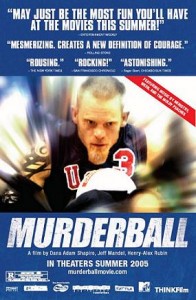
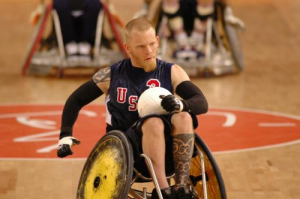
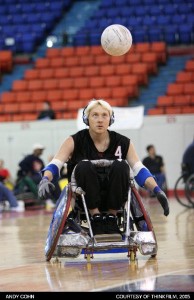
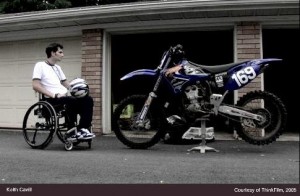
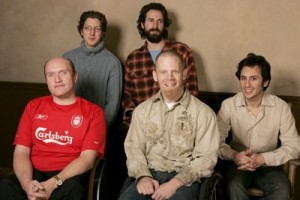

 Member since 2019 | JM14274
Member since 2019 | JM14274


NO COMMENT